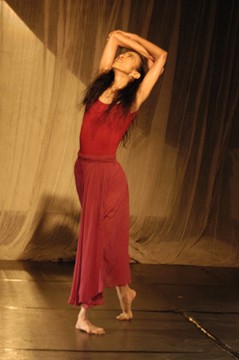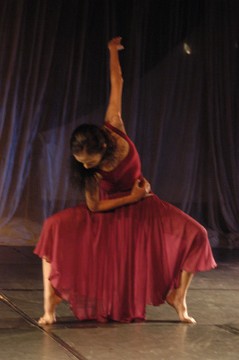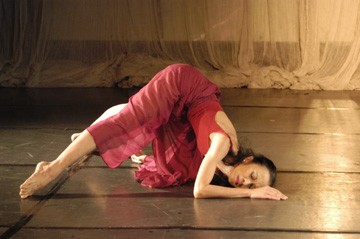by Myra C. Beltran
Published 1998 in Filipiniana Reader: a Companion Anthology of Filipiniana Online, ed. By Priscelina Patajo-Legasto. Quezon City: University of the Philippines Open University, 1998.
I had wished to start this paper by saying outright that the views contained herein are particular to the one who is giving this paper; and it is so, but then as I began to write it, I realized that one phrase contained the whole essence of this paper.
“Reclaiming the Body as Home”
The views presented herein are the result of the experience of one body and as one feminist writer has put it: (Helen Cixous)
“Where does this thought come to us from: from the body
It is the place that writes.”
and because this paper is about dance, it is necessarily, from the body.
Our thoughts then come from the body — our image of ourselves as a body, and I mean, the totality of that body, — yes, the height, the width, the big hips, the small breasts or our gross body, and — the body which we experience as the felt body of muscular imagination or our kinesthetic body, but also, our imaginal body, that non-physical, “subtle” body composed of more subtle matter and energy. This is the body that is created by our imagination — and therefore, our spirit and our yearning to become.
Traditional tribal belief holds that a person lacking a total image of himself / herself is prone to disease and / or neurosis.
So it is that we find recorded the Greek pilgrimage to the temples of Asclepios, where the citizens are exposed to art, music, dance, drama, and where at the end of the day, they pray for a dream, a dream that will connect them to a higher order, that will give them a more total vision of themselves and thus, ultimately, will bring them to the path of healing, where they can come back to life with a renewed sense of vigor and purpose.
This we also find in the Australian Aboriginal practice of “Dreamtime”, which underlies all Aboriginal art, and also in the Philippine rites of healing, where the “babaylan” or priestess enters into a trance or altered state of consciousness to call the spirit back of a diseased person, so that it may once more inhabit that person’s body and that person can be well again. It is also why we hang amulets above a baby’s crib because supposedly, the baby’s spirit is not strong enough and thus, susceptible to being led astray by other spirits while she/he is dreaming.
This concept, perhaps found in all traditional cultures, has only of recent become clear to us, only now have we discovered its meaning.
They only profess one thing — the unity of mind and body.
In this age of media manipulation and disembodied conversations on the Internet, that, indeed, seems to be a totally radical idea.
And yet, it is what we, in my opinion, as practitioners in dance, must bring back with a force if we wish to bring our art-form to the 21st century and if we wish to assist in preserving that human body which forces nowadays seem to conspire against.
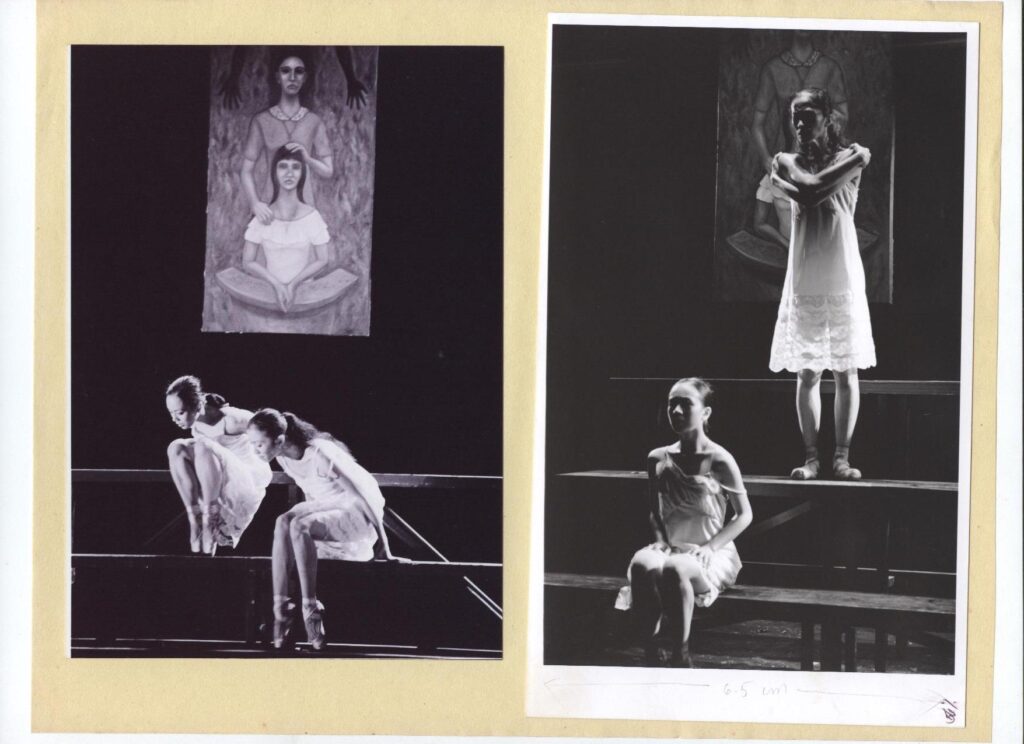
That “dance” in indigenous cultures also encompassed the idea of ritual — where the entire community celebrated its body and its history, is a concept that underlay the development of what we call modern dance of the Western culture.
Beginning with Isadora Duncan, and further through to (and this is this writer’s choice), the American Martha Graham and the German Pina Bausch, dance grew from being merely divertissement or spectacle to something that included a more “inner awareness” of things and where both the mundane and the mythic became the subject matter for dance, and where, as their creators allowed it through their creations, affirmed each body’s unique language.
Each body’s unique language.
Since I believe that art does not exist in a social vacuum, and that all movements in art are of a political nature, I would venture to say that the aforementioned choreographers had the capacity to link the personal, (through their particular movement expression), to the political.
The link of the personal to the political is also the feminist struggle for empowerment. At the core of this movement, to my mind, is the reclaiming of women of their bodies.
It is only by affirming their bodies that women can affirm themselves.
And more important, what this movement toward the reclaiming of the body implies is the redefining of our concepts of beauty, our concept of community and how we relate to one another, and therefore, also our potential to become — or our vision of ourselves.
This movement toward reclaiming the body as home, as the source of intelligence, also then means a collapse of previously held notions of art and society, in general, and as a consequence, also represents a great potential for renewing energies.
Therein lies the “advocacy” of a “coming back to the body” in the Philippine context.
In the Philippines, where we straddle both the Eastern and Western culture, and where, in contrast to other Asian countries, we have not preserved our indigenous dances into, as they call, one “classical” form or school, a “coming back to the body” leaves open a space to re-define the direction of dance in the Philippine context — a wide open space to create.
A space that, yes, is terrifying on the surface, but only because it waits to be defined.
This fear of letting go of images of ourselves dancing, of ideas on what constitute beauty, the fear of exposing one’s true self, in case the self one encounters is not totally an agreeable one, this “fear”, I believe, has prevented us from searching for the true process and context by which we create our dances.
It also then prevents us from “challenging” in an atmosphere of openness, the direction and manner in which our cultural institutions seem to be steering dance in Philippine society.
Thus, we find ourselves unable to contribute singularly to the imminent discussion of the future of the dance art at the close of a century and are not able to offer bold visions to its coming shape.
By “reclaiming the body as home”, we not only uphold our dignity as dance practitioners, amidst the commercialization of our dances as practiced in the importation of entertainers/cultural dancers, but also, we come to a more complete understanding of our legacy as dance artists, both in the traditional Philippine and the Western tradition of dance.
And in the case of the younger generation, they would begin to appreciate and respect the teachers and dancers who carved the path which they now tread and to which later they will be asked to lead.
I have great optimism that if all undertake this arduous task, we would succeed in bringing back our art-form to the noble function it once had in tribal society, and succeed in erasing dichotomies which separate us from each other and our general public.
We would have created an environment (both artistic and institutional) where all ideas could flourish, and where each body that offered its own unique language would be respected and encouraged.
As we stand, most of us are content to find comfort within the private “hamlets” that we have erected, unwilling and unresilient to new ideas that come our way.
But this “dare”, the “dare” to become is a necessary one — it is a rite of passage to those who wish to take an active role in defining dance in Philippine society, onward to the next century.
It is not an easy task, and more importantly, it is also a never-ending one.
But I also believe that it is a beautiful one, because it contains the promise of a concrete experience of the interconnectedness of all life, the ultimate Dance — the march toward the stars.
After all, as one writer has put it: (Rudhyar)
“… liberation or happiness,
transmutation or stability —- the forms that free or those that satisfy?”
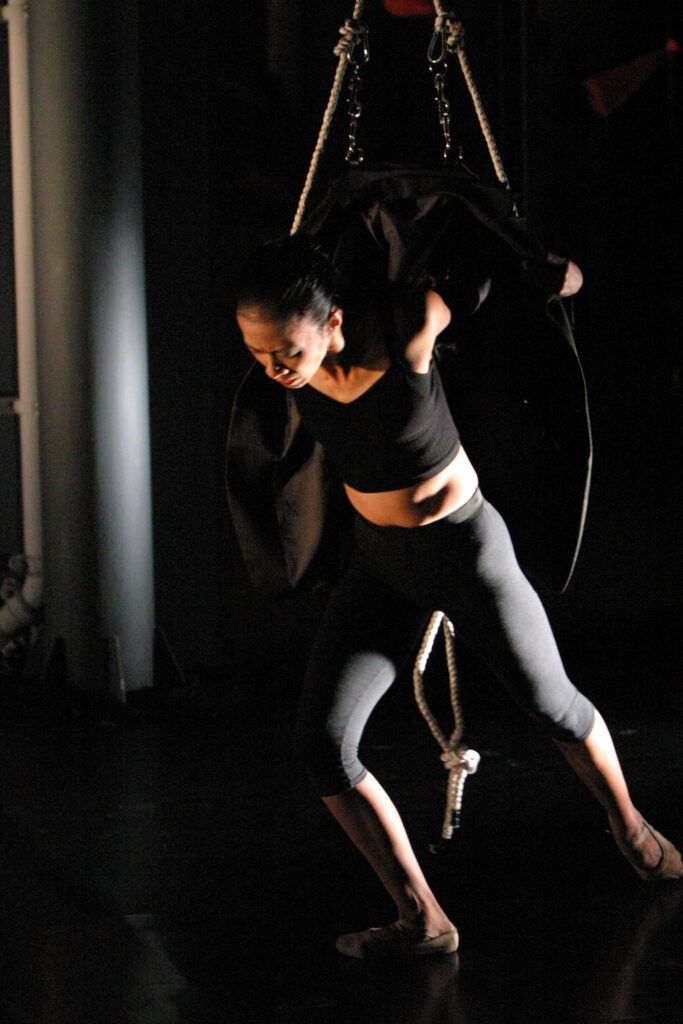
Beltran, Myra C. “Reclaiming the Body as Home,” Filipiniana Reader: a Companion Anthology of Filipiniana Online, ed. By Priscelina Patajo-Legasto. Quezon City: University of the Philippines Open University, 1998.
